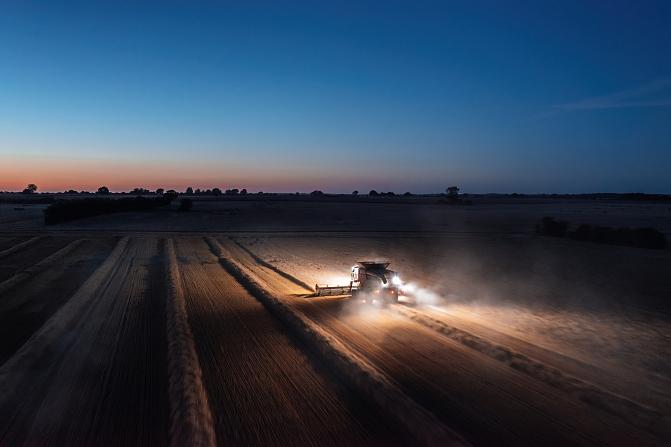Highlights from the 2024 harvest year: Historically large pea harvest – rye harvest insufficient for Finnish rye bread
The oat harvest produced on Finnish fields will be larger than the barley harvest for the first time in almost 50 years. The rye harvest will only be sufficient for roughly six months of consumption. In contrast, the pea harvest will be the largest in the 100-year history of the statistics. These and many other harvest data from 2024 are available in the preliminary data on the official crop production statistics of the Natural Resources Institute Finland (Luke).
Regular cereal harvest at roughly 3.3 million tons
During the autumn season, combine harvesters work on Finnish fields over an area of almost a million hectares, harvesting yields for the winter. Barley and oats are the most significant cereals. They account for more than 70 per cent of the total cereal harvest.
“This year, the oat harvest will reclaim the number one position, which it lost to barley in 1977. In the over 100-year history of the statistics, barley has held on to its lead for nearly five decades”, says Anneli Partala, Senior Statistician at Luke.
Smallest rye harvest in five years
The rye harvest shows significant variation from one year to the next, mainly due to Finland’s short growing season and heavy rains in autumn. This year’s small harvest resulted from the significant rainfall in autumn 2023, when not all willing farmers were able to sow rye. Last summer’s drought also reduced the rye harvest. The calculated rye harvest will be sufficient for almost six months of Finnish consumption.
Historically large pea harvest
Pea production skyrocketed five years ago. The food and feed pea area and yield have increased almost ten times in a decade. The pea area has been larger than the rye area since 2020. Pea has replaced the use of soy in high-protein feed products.
Average green fodder harvest
The silage fodder yield is estimated at more than eight billion kilos. Silage fodder has been the primary green fodder in Finland since the 1990s. Before that, most grasslands were harvested as dry hay. The percentage of dry hay of the total grassland area has decreased down to a fifth.
A tenth of the rye harvest is organic
More than four per cent of this year’s cereal harvest was organic. Organic farming played the most important role in rye production, accounting for roughly a tenth of the rye harvest. Oats made up two thirds of the organic cereal harvest of some 143,000 tons. The organic oat harvest of roughly 91,000 tons marks the second largest in Finland.
The organic pea harvest is also historically large. Of the total pea harvest of roughly 102,000 tons, organic peas accounted for 12 per cent, or 12,000 tons.

The crop production statistics cover all key crops in Finland
The crop production statistics are part of the Official Statistics of Finland (OSF), for which data will be collected from 5,700 farms this year. The preliminary crop production statistics are based on data obtained from approximately 4,300 farms, some 500 of which are organic farms. The collection of harvest data will end in December, and the final 2024 crop production statistics will be completed in February 2025. You can subscribe to the statistics by email here.
The level of domestic crop production regarding key crops has been monitored in Finland for more than a hundred years. Historical data and data about the level of crop production in different parts of Finland are available in Luke’s statistical database. From 2023, the data have been published by region, whereas the previous years’ data have been divided between the regions of the Centres for Economic Development, Transport and the Environment (ELY).
The crop production statistics indicate the harvest levels of the following crops in Finland: rye, wheat, barley, oats, turnip rape, rapeseed, potato, sugar beet, food pea, feed pea, caraway, dry hay, and silage fodder. Organic harvest data are available from 2006.
Statistical publication
- Crop production 2024 (provisional)
- Subscribe to releases
- Crop Production Statistics
- Utilised Agricultural Area
- Structure of agricultural and horticultural enterprises
- Cereals balance sheet
- Balance Sheet for Food Commodities
- Statistic on the purchase, use and storage of cereals and protein and oilseeds



